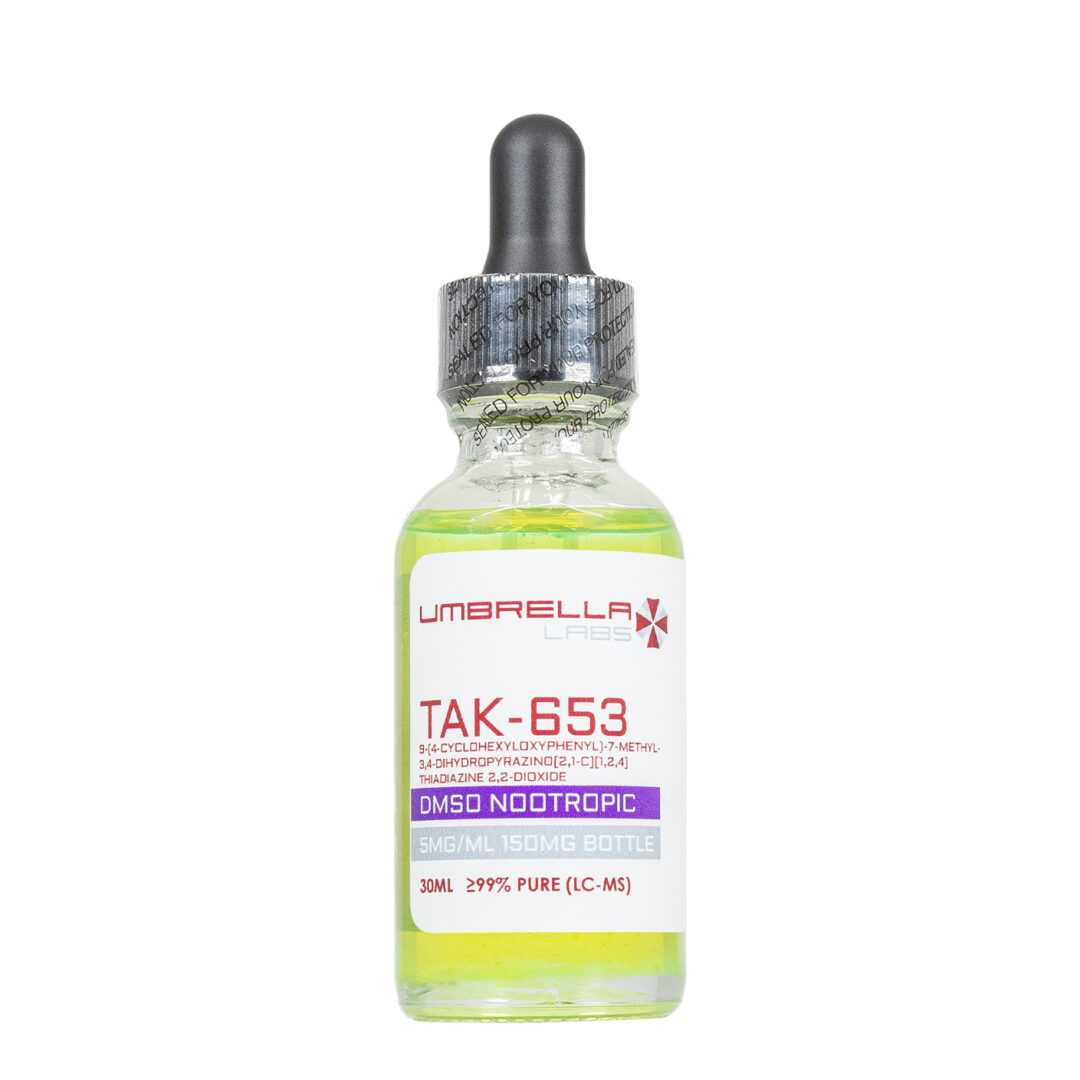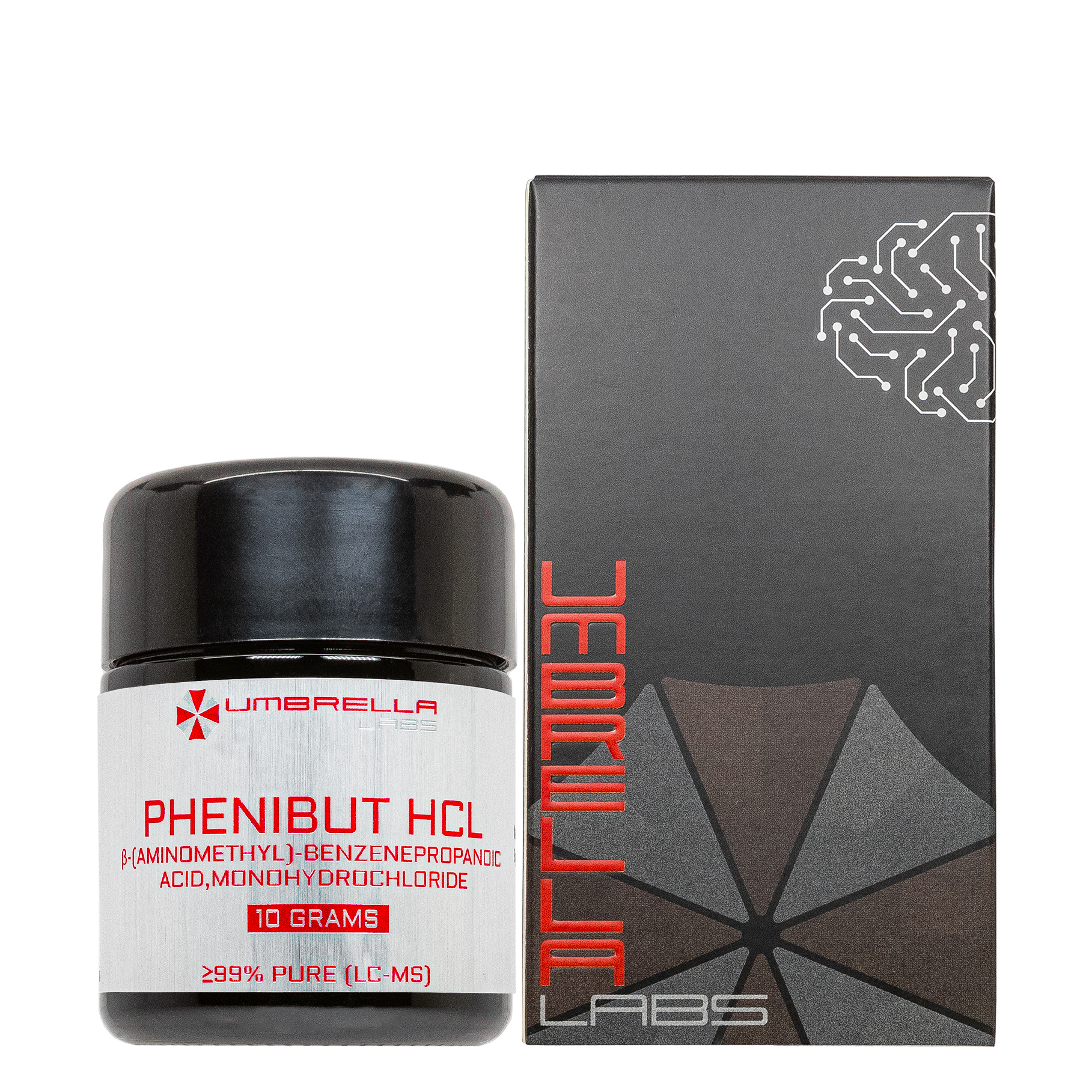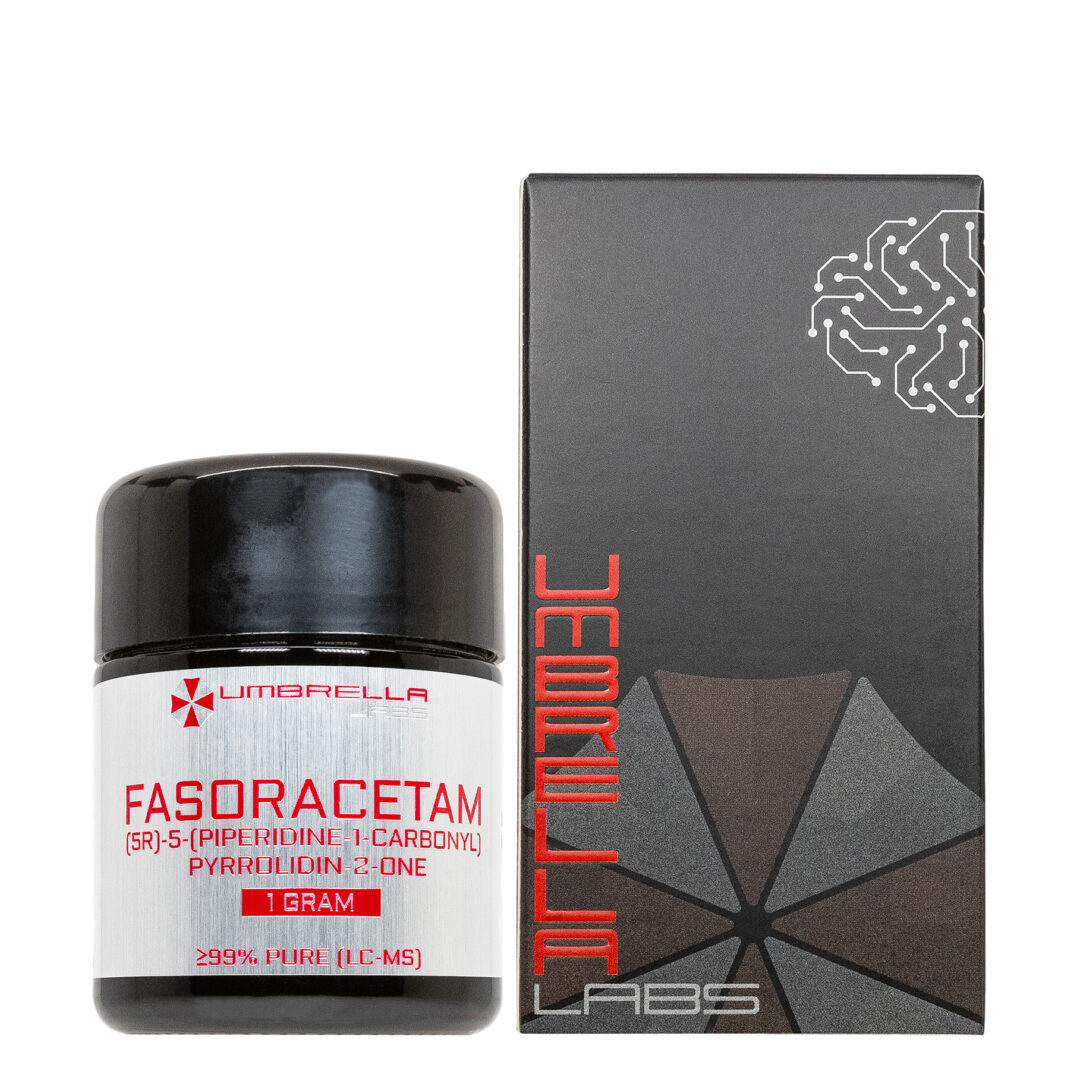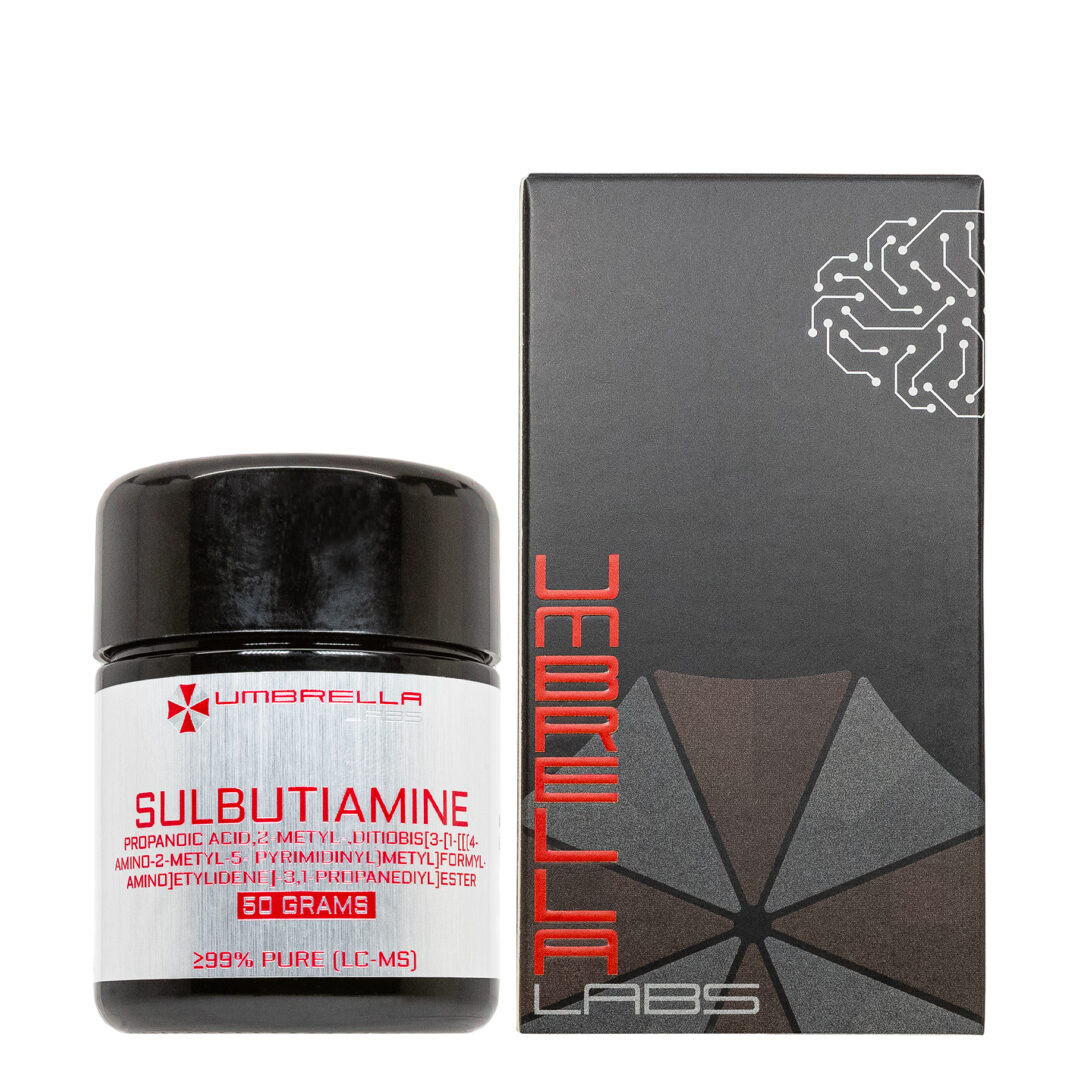TAK-653 30ML LIQUID (5MG/ML, 150MG BOTTLE)
$150.99
TAK-653 is sold for laboratory research use only. Terms of sale apply. Not for human consumption, nor medical, veterinary, or household uses. Please familiarize yourself with our Terms & Conditions prior to ordering.

Also Available In:
- Description
- Additional information
Description
TAK-653 Nootropic Liquid
![]()
![]()
![]()
![]()
![]()
![]()
![]()
![]()

| CAS Number | 1358751-06-0 |
| Other Names | 9E3Toe5riz, 9E3TOE5RIZ, UNII-9E3TOE5RIZ, SCHEMBL622985, CHEMBL4594403, PXJBHEHFVQVDDS-UHFFFAOYSA-N, EX-A6607 |
| IUPAC Name | 9-(4-cyclohexyloxyphenyl)-7-methyl-3,4-dihydropyrazino[2,1-c][1,2,4]thiadiazine 2,2-dioxide |
| Molecular Formula | C₁₉H₂₃N₃O₃S |
| Molecular Weight | 373.47 |
| Purity | ≥99% Pure (LC-MS) |
| Liquid Availability | |
| Powder Availablity | |
| Gel Availablity | N/A |
| Storage | Store in cool dry environment, away from direct sunlight. |
| Terms | All products are for laboratory developmental research USE ONLY. Products are not for human consumption. |
TAK-653 is an AMPA receptor positive allosteric modulator that has shown promise in treating major depressive disorder and treatment-resistant depression in rodents. Researchers have long associated mood disorders with the effects of AMPA receptors and related compounds such as the neurotransmitters glutamate and brain derived neurotrophic factor (BDNF). Presently, ketamine, an antagonist to NMDA receptors, is being examined for its potent antidepressive effects. Studies have found that treatment with ketamine leads to a stimulatory effect on AMPA receptors. This results in increased levels of glutamate in the brain as well as the mechanistic target of rapamycin mTOR signaling. Glutamate is associated with the pathology of mood disorders and how they are related to synaptic plasticity and the secretion of BDNF. As ketamine stimulates the mechanisms of AMPA receptors, researchers hypothesize that they are potentially related to the treatment of depression (https://www.ncbi.nlm.nih.gov/pmc/articles/PMC9509332/).
While ketamine is capable of treating depression on its own, there are often psychotomimetic and dissociative side effects reported while this drug is being used for treatment. Research has found that the AMPA receptor antagonist, NBQX, blocks the majority of the antidepressive effects of ketamine. The effects of ketamine were also reduced depending on rates of BDNF secretion and mTOR signaling. AMPA receptor activators have been found to elicit quick and potent antidepressive effects, however they are not without limitations. That being said, researchers examined how the AMPA receptor potentiator TAK-653 is capable of effectively treating depression with almost no additional agonistic activity.
Researchers Hara et. Al conducted a study examining the antidepressant behavioral effects of TAK-653 in the rat reduction of submissive behavior model (RSBM) Additionally, the psychotomimetic side effects of TAK-653 were compared to those of ketamine. The experimentation period began with an initial evaluation of the rats in order to determine which of the test subjects would be considered dominant and which were submissive. The dominant rats would be receiving a dose of the vehicle while submissive ones would be receiving 30 mg/kg dose of ketamine. The same methods of evaluating dominance were used when determining the rats that would receive the active dose of TAK-653. Submissive rats were given varying doses of TAK-653 while the dominant animals received a vehicle.
The rats were administered the doses of TAK-653 approximately 2 hours before the test period. On each day the rats received the treatment and were subjected to 5 minutes of behavioral testing, followed by 1 hour of free access to food. Results of this study found that TAK-653 is capable of activating mTOR signaling and producing BDNF in a dose-dependent manner. The study also concluded that while antidepressant effects were seen when treating the rats with ketamine, the compound had a higher tendency to be blocked by antagonists like NBQX, and elicit abnormal behaviors such as hyperlocomotion. These findings allowed researchers to conclude that TAK-653 treats major depressive disorder and treatment-resistant depression more efficiently than ketamine due to the absence of side effects in subjects treated with TAK-653 (https://www.sciencedirect.com/science/article/pii/S009130572100188X).
AMPA Receptor Modulation
Further studies regarding the efficacy of TAK-653 evaluate how the compound modulates the activity of AMPA receptors by observing cortical excitability. Researchers O’Donnell et. Al used transcranial magnetic stimulation (TMS)-induced motor responses to identify these biomarkers as well as the various pharmacodynamic and pharmacokinetic qualities of TAK-653.
The study included 31 adult Sprague Dawley rats and each subject received doses varying from 0.3 to 50 mg/kg of TAK-653. TMS testing took place 75-135 minutes after TAK-653 administration, and at each time point 10 pulses at 80% power were applied to the subjects. Plasma and brain specimens were collected approximately 2-3 hours after TAK-653 administration. Results of the study found that all doses of TAK-653 increased the rate of cortical excitability at a greater degree than the vehicle. However, the most effective dose was 50 mg/kg which resulted in 264.2 ±81.9 ng/g of TAK-653 in the plasma.
Overall, the researchers were able to conclude that using noninvasive stimulation in the brain can lead to accurate identification and generation of neurocircuitry biomarkers, as well as modulate the resulting effects of AMPA receptor activity. As it was previously mentioned AMPA receptors are shown to regulate variables such as glutamate activity, mTOR signaling, and BDNF expression. That being said, this study primarily focused on glutamate activity and through the use of TMS, researchers were granted further insight on glutamate receptor-mediated effects and glutamate synaptic activity in relation to TAK-653 (https://www.nature.com/articles/s41398-021-01451-2).
The nootropics sold by Umbrella Labs are sold for laboratory research only. The description above is not medical advice and is for informative purposes only.
TAK-653 is sold for laboratory research use only. Terms of sale apply. Not for human consumption, nor medical, veterinary, or household uses. Please familiarize yourself with our Terms & Conditions prior to ordering.
![]() A Novel Contender In The Fight Against Treatment-Resistant Depression
A Novel Contender In The Fight Against Treatment-Resistant Depression





| File Name | View/Download |
| 08-30-2023-Umbrella-Labs-TAK-653-Certificate-of-Analysis-COA.pdf |
VIEW CERTIFICATES OF ANALYSIS (COA)
Additional information
| Options | 30mL Liquid 20mg/mL 600mg Bottle, 500 Milligrams Powder, 1 Gram Powder |
|---|















